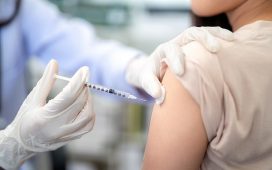Yuliya Taba | E+ | Getty Images
More borrowers are behind on other payments
More than 1 in 13 holders of federal student loans are currently behind on their other payment obligations, the CFPB found.
As of March, around 2.5 million people with student debt were delinquent on another one of their loans or payments. That’s 200,000 more borrowers with a delinquency, compared with last September.
“These borrowers might be unable to make payments on their student loans if they are already missing payments on their credit cards or auto loans, which research suggests people often prioritize over their student loans,” said Kentia Elbaum, a spokesperson for the CFPB.
More from Personal Finance:
Is Supreme Court Justice Barrett key to student debt relief?
What to do if Biden’s student debt plan is struck down
Here’s how things go so bad with student loan debt in the U.S.
Recent economic conditions are likely at least somewhat responsible for the uptick in delinquencies, said higher education expert Mark Kantrowitz.
“They might be behind on other debt because they got overextended due to higher inflation and higher interest rates,” he said.
Student loan borrowers are deeper in debt
Meanwhile, more than half of student loan borrowers expected to resume their payments have higher monthly debt-related expenses than they did before the pause on bills began (excluding their student debt or mortgage payment), the CFPB writes.
Many of these higher balances likely come from those aforementioned credit card and auto loan bills.
While federal student loan payments were suspended, many borrowers probably used their freed-up cash to take on more debt, Kantrowitz said.
“Unfortunately, the increased cash flow was always going to be temporary and debt is more long-term,” he said.

Because there’s no lending precedent for borrowers getting such a long reprieve from their bills, there is little evidence to hint at what could happen when the payments resume.
However, the CFPB’s findings show millions of student loan borrowers will resume their payments in a more precarious financial situation.
Consumer advocates say the risks will only rise if the Supreme Court strikes down Biden’s plan to cancel up to $20,000 in student debt for tens of millions of Americans. The justices are currently debating the validity of the president’s relief program and are expected to issue a ruling within weeks.
“Resuming student loan payments without cancellation will lead to unprecedented delinquencies and defaults for the most financially vulnerable borrowers,” said Persis Yu, deputy executive director at the Student Borrower Protection Center.
Even before the Covid-19-related public health crisis, when the U.S. economy was enjoying one of its healthiest periods in history, there were still problems plaguing the federal student loan system.
Only about half of borrowers were in repayment in 2019, according to an estimate by Kantrowitz. Around 25% — or more than 10 million people — were in delinquency or default, and the rest had applied for temporary relief measures for struggling borrowers, including deferments or forbearances.
These grim figures led to comparisons to the 2008 mortgage crisis.









